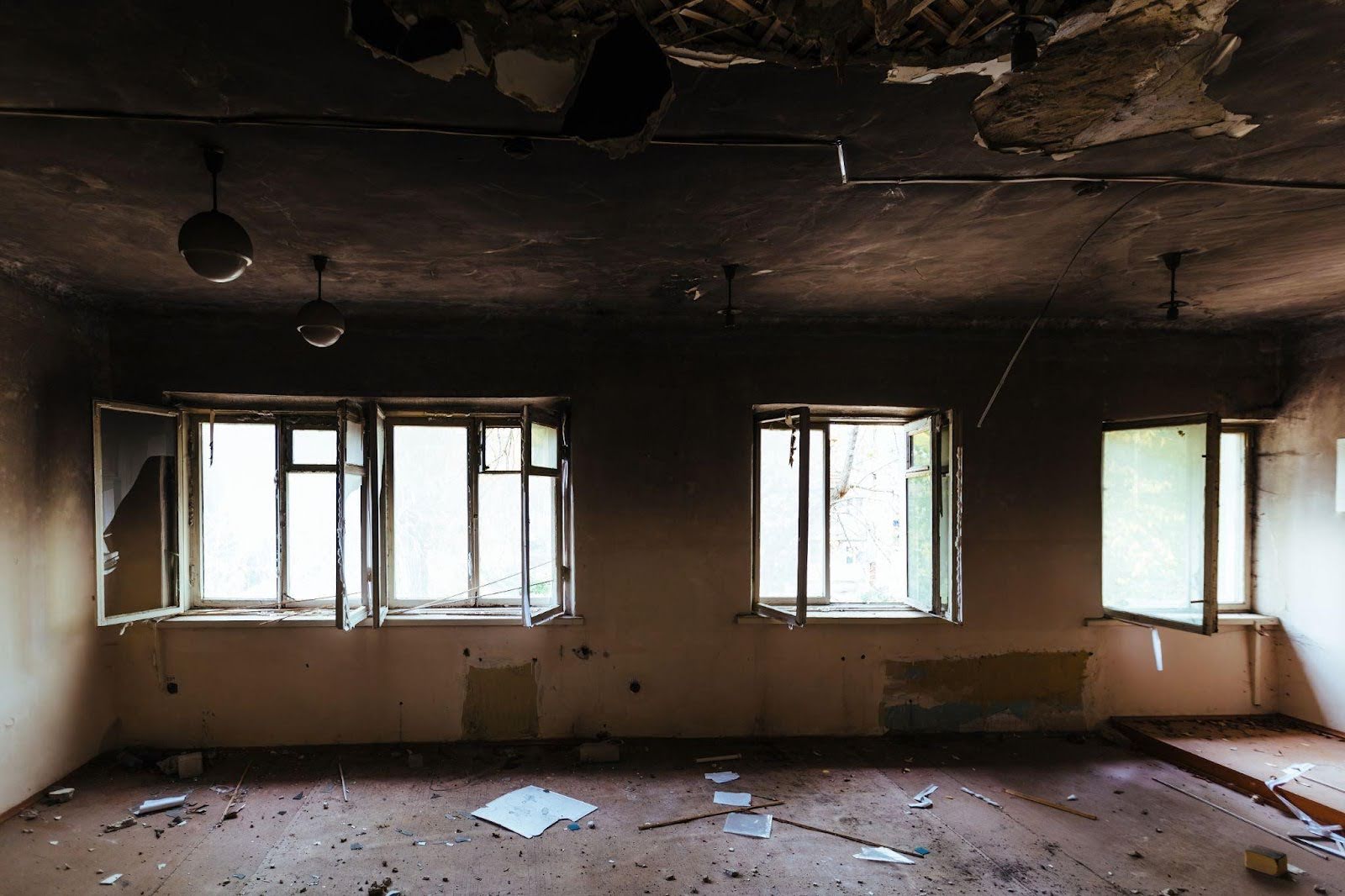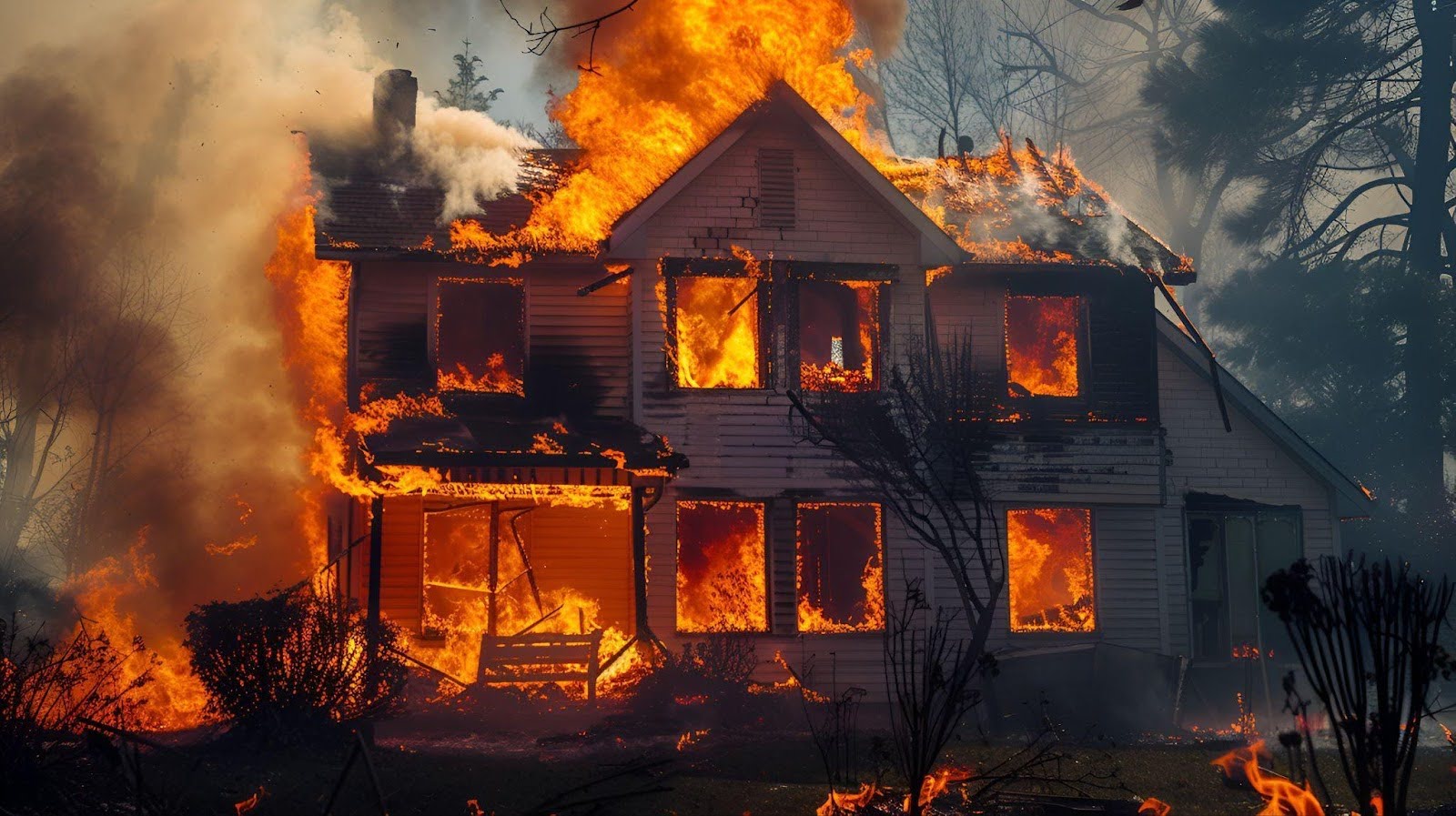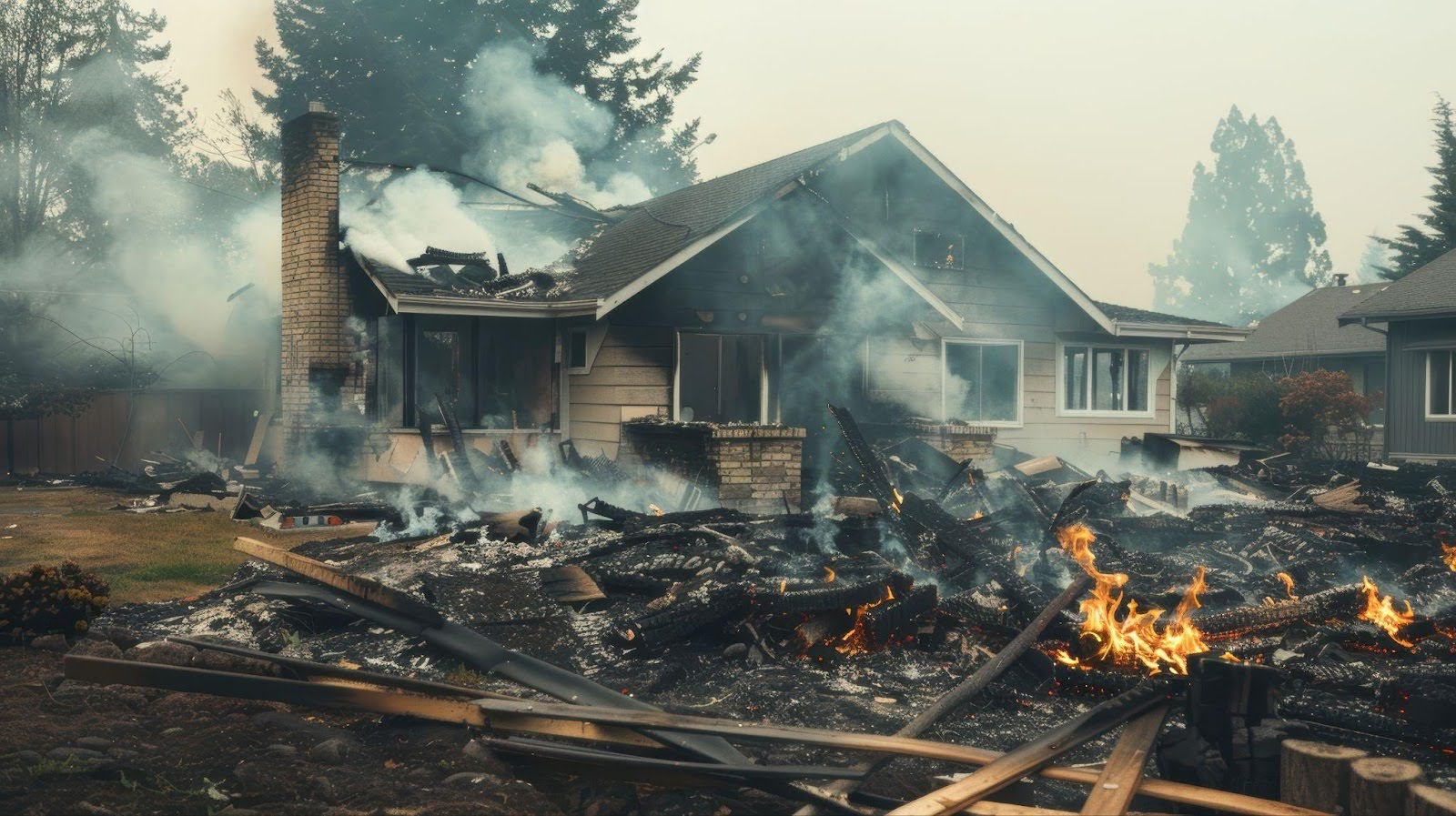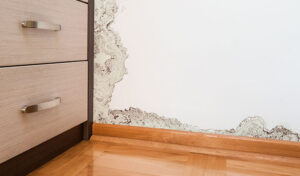Fire damage and smoke damage leave lasting emotional, financial, and environmental consequences. While the flames may be extinguished quickly, the lingering smoke, soot, and ash continue to threaten indoor air quality, surface materials, and the safety of the entire property.
It’s important to understand that fire and smoke damage are different. Fire damage refers to what the flames burn, melt, or destroy. Smoke damage, on the other hand, spreads further and seeps into places the fire never touched.
This blog explains the key differences between fire and smoke damage. You’ll learn how to spot the signs, understand the risks, and respond with the right restoration steps to protect your health and property. Taking the right action early helps you avoid costly mistakes and ensures a safer recovery process.
What is fire damage?
Fires cause immediate, visible destruction. When flames sweep through a space, they scorch materials, compromise structural integrity, and leave behind unsafe conditions.
What causes fire damage
Direct exposure to flames and high heat damages everything it touches. Wood burns, metal warps, and plastic melts. Roofing, framing, drywall, and insulation often take the brunt of the impact, especially in the areas closest to the fire’s origin.
What fire damage looks like
Fire damage often leaves walls blackened, beams split, and personal belongings reduced to ash. Melted appliances, shattered glass, and collapsed ceilings are common in more intense fires. Many times, smoke and water from firefighting efforts add to the destruction.
How fire damage compromises structural safety
Charred wood and scorched materials lose their strength. Even if a surface appears intact, fire may have compromised its structure. Damaged supports, floors, and ceilings can collapse without warning. Before rebuilding, professionals must assess the safety of the entire area.
Recognizing the full impact of fire damage helps you take the right steps toward recovery and repair. It also sets the stage for understanding how smoke leaves a different kind of destruction behind.
What is smoke damage?

Even after flames go out, smoke continues to cause serious damage. Unlike fire, smoke travels freely through the air and reaches places untouched by flames. The particles it leaves behind cling to surfaces, settle deep into fabrics, and contaminate your home in ways that are not always visible.
What causes smoke damage
Smoke damage happens when burning materials release fine particles and chemical byproducts into the air. As smoke travels, it deposits soot and oily residues onto everything in its path. These particles come from various sources — wood, plastics, fabrics, and other synthetics — and they leave behind different kinds of residue, from dry ash to sticky, corrosive film.
How smoke affects your home
Smoke leaves black or gray residue on walls, ceilings, and floors. It also discolors paint, leaves behind strong odors, and creates a film that clings to windows, light fixtures, and electronics. Soot may also be found inside HVAC vents, behind appliances, and even inside closed drawers or cabinets. Its reach often surprises homeowners.
Surfaces and systems at risk
Smoke damages a wide range of surfaces. It embeds in carpets, drapes, and upholstered furniture. It settles on wood, tile, and metal. Electronics, including TVs, computers, and kitchen appliances, are especially vulnerable to smoke residue and can fail if not properly cleaned. HVAC systems also draw in airborne particles, spreading contaminants throughout the home.
Smoke damage may not always look severe, but it quietly affects air quality, corrodes materials, and leads to long-term problems if not addressed. Identifying the extent of smoke damage helps ensure you clean and restore your home properly.
Health and safety concerns after a fire
Fire and smoke damage leave more than visual destruction — they introduce serious health and safety hazards that demand immediate attention. Knowing what to look for and when to call for help can prevent injuries, protect your family, and ensure a safe restoration process.
Physical risks from fire damage
Fires weaken structural components, which can lead to partial or total collapse. Walls may bow, ceilings might sag, and floors often warp or crack under heat stress.
Hidden damage behind walls or beneath the surface may cause injuries if someone walks into an unstable area. Sharp debris, like exposed nails, shattered glass, or splintered wood, also presents significant hazards during early cleanup efforts.
Health threats from smoke damage
Smoke lingers long after the flames disappear. It fills the air with toxic particles such as carbon monoxide, formaldehyde, benzene, and other volatile organic compounds. Inhaling these substances can lead to short- and long-term respiratory problems, skin irritation, and headaches.
People with asthma, allergies, or weakened immune systems face even higher risks. Even light soot on surfaces or within HVAC systems continues to degrade indoor air quality over time.
The need for professional inspection
Before you reenter or begin repairs, schedule a full inspection by certified fire damage professionals. They know how to identify structural instability, detect hidden smoke residue, and test air quality for dangerous particulates. Their expertise ensures your home is safe for occupancy and reduces the risk of future damage or health complications.
Restoration and cleanup differences between fire and smoke damage
Fire and smoke damage both require professional restoration, but the process differs significantly based on the source and severity of the destruction. Understanding how each type of damage is treated helps homeowners choose the right services and plan a full recovery.
Fire damage restoration focuses on structural recovery
After a fire, professional restoration teams remove debris and assess structural safety. Severely damaged materials such as charred framing, warped flooring, and compromised roofing often require full demolition. Technicians tear out unsalvageable parts of the structure to prevent future collapse or contamination.
Once cleared, contractors rebuild the affected areas using new materials that meet current safety codes. Restoration may also include rewiring electrical systems, reinforcing weakened supports, and conducting in-depth inspections to ensure the building is safe for occupancy.
Smoke damage cleanup requires deep cleaning and deodorization
Unlike fire damage, smoke leaves behind a layer of fine particles and oily residue that infiltrates surfaces and lingers in the air. Restoration specialists use commercial-grade cleaning agents to scrub soot from walls, ceilings, and fixtures. These products break down sticky film without damaging the surface underneath.
Crews use HEPA air scrubbers and ozone generators to remove lingering odors and harmful particles. These tools filter out microscopic contaminants and neutralize airborne toxins that affect indoor air quality. Technicians also clean and disinfect the HVAC system to prevent smoke particles from recirculating throughout the home.
When to call a professional restoration team
Fire and smoke damage often hide where basic cleanup cannot reach. DIY efforts usually fall short and risk spreading contaminants. Restoration professionals use specialized tools and follow strict safety standards to remove residue, clean air systems, and prevent further damage.
Certified teams assess the damage, create a full recovery plan, and handle everything from demolition to deodorization. They also help with insurance documentation, offering accurate estimates and photo evidence to streamline your claim.
If your home has experienced fire or smoke damage, contact a licensed restoration team immediately. Their expertise protects your health, preserves your property, and restores your home properly.
Restore your property with trusted professionals at Total Flood and Fire Restoration
Don’t try to manage recovery alone when your home or property suffers from fire or smoke damage. Trust Total Flood and Fire Restoration to step in with the expertise, equipment, and care your situation demands. Our certified team handles everything from structural repairs to deep cleaning and odor removal, restoring your space safely and completely.
For fast, thorough fire and smoke damage restoration, contact Total Flood and Fire Restoration. We respond quickly, work with your insurance provider, and help you move forward with peace of mind.








